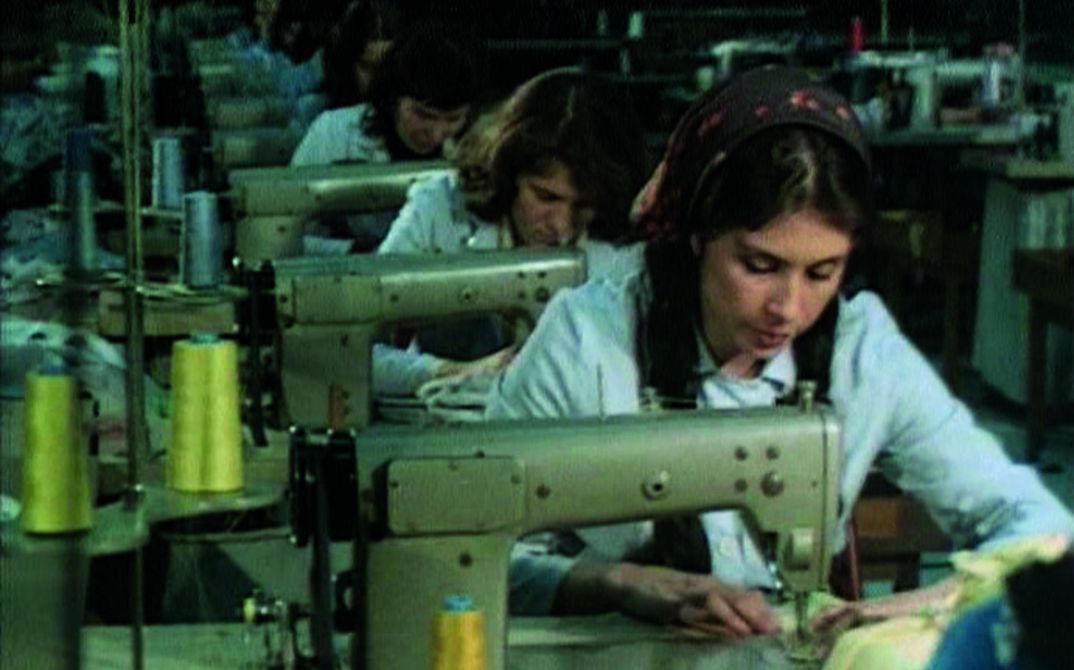Transnational archival work
How can we establish new approaches for dealing with archives and film heritage that are independent of a definition of “national film heritage” and not based exclusively on the limited self-understanding of a nation-state? Several projects that have arisen over the past decade show that much is possible in this regard.
Archive außer sich, a project of Arsenal – Institute for Film and Video Art in cooperation with diverse partner organizations, begins with the idea of a “living archive” and understands the archive as a site of production, thereby connecting to Arsenal’s previous Living Archive project. In various formats – research, events and exhibitions – Archive außer sich addresses cultural heritage beyond national or other ordering criteria, postulating that: “The investigation, digitalization and/or restoration of archival materials are part of a participatory artistic and curatorial practice of the present.”
The re-selected project, led by Tobias Hering, also critically examines the nature of the archive and proposes treating film history as a history of copies. Film prints are understood as the bearers of history and “portable sites of remembrance” (Sylvie Lindeperg): “The project looks at film history as a history of the reception of film prints whose itineraries are unique and have marked their material presence.”
A project planned by bi’bak for 2021 in cooperation with DOMiD takes the sixtieth anniversary of the recruitment agreement between Germany and Turkey as an opportunity to reconsider and recontextualize the film prints held in the DOMiD archive. The series, taking place at SİNEMA TRANSTOPIA, will include little known films from Turkey, Greece and the former Yugoslavia alongside discussion groups and lectures, and will focus on the stories of so-called guest workers. It will dismantle stereotypical narratives and existing pictorial politics, offer new perspectives on the history of labour migration and argue for a transnational memory culture.
What is or what becomes part of an archive is not the only relevant question for the cultural memory and narrative of a society; how archival holdings are maintained and whether they are accessible also play a decisive role.
The book Please Rewind, which was published last year by Archive Books, contains the results of an artistic research project of the same name that I oversaw. The project and publication focused on the rediscovery of German-Turkish film and video culture in Berlin – a chapter that deserves much more attention in this country’s film and media history.
In Berlin a large German-Turkish population has become an established part of the city’s cultural life, and within this community over the years a Turkish film culture has emerged. It began with screenings of Turkish films in Berlin movie theatres; in the 1980s, Turkish-language videotapes became popular as a welcome alternative to the exclusively German television broadcasts. The numerous video shops in which these films could be obtained as well as the Turkish Bazaar at the Bülowstraße subway station played a central role in this. For families, video evenings became important social events, to which neighbours and friends were also invited. Besides the entire range of Yeşilçam productions that included comedies, melodramas and action films, Turkish films produced in Germany were also popular, thematizing the migration experience and feelings of alienation, raising questions of identity, religion and family. These films and their aesthetics influenced an entire generation of well-known German filmmakers, including Thomas Arslan, Fatih Akin and Ayşe Polat. Their history, however, has been almost entirely absent in the discourses about post-migrant film.
These films and their transnational narratives as well as the associated locations and actors are an important dimension of German film history and German cultural history, which should be remembered and perceived as such. With this goal in mind, I conducted interviews with contemporary witnesses, including the owners of video shops, and did research in municipal archives. The knowledge of other experts was also included in the book project and the program in the form of conversations, texts and film series.
As part of this project, film scholar Ömer Alkın conceived the film series Ideology in Turkish Cinema: The Figure of the Migrant and examined the films (that remain largely unknown in Germany) of Yücel Çakmaklı, Halit Refiğ and Yılmaz Güney, representatives of three ideologically conflicting positions. The migrant protagonists function as the bearers of these films’ ideological imports and in this way tell us much about migration history in Germany. With screenings supplemented by introductions and conversations, as well as English-language subtites, the film series provided a broader public with access to a crucial depository for migration-cultural memory. Filmmaker Cem Kaya, who grew up in Germany with films from Turkish video shops, participated in the program with a screening of his documentary film REMAKE, REMIX, RIP-OFF (2014) and an ensuing discussion. Kaya’s film traces the copy culture of Turkish filmmakers from the beginnings of Turkish cinema through to contemporary television series. Despite the diversity of contributions that arose as part of Please Rewind, at the end of such a project we find ourselves in fact at the beginning of a research journey that must be quickly continued. Contemporary research is always a race against time, and in this particular context all the more so, as not only the films, the videos and the pictorial material, but also the sites, the contemporary witnesses and their narratives are in the process of disappearing. One reason for this is that archives in Germany have researched and collected too little of the everyday practices of marginalized groups in society. This could have been different if public interest priorities had been set differently. Here it becomes clear that archival work – the work by and with archives – is also a political practice.
